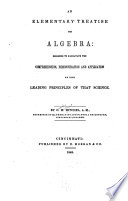 | Ormsby MacKnight Mitchel - Algebra - 1845 - 308 pages
...square of the second. 18. Multiply a+b by a — b. The product is a2 — b2 ; whence we find, that the product of the sum, and difference of -two quantities, is equal to the difference of their squares. These results it is important to retain, as they are of frequent application. Homogeneous terms, are... | |
 | Scottish school-book assoc - 1845 - 444 pages
...less than the sum of their squares by twice their product. (See Art. 28, Example 2.) 31. THEOREM III. The product of the sum and difference of two quantities is equal to the difference of their squares. (See Art. 28, Example 3.) NOTE. The above theorems are very important, and should be committed to memory.... | |
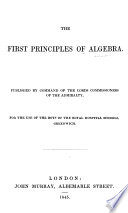 | Admiralty - 1845 - 152 pages
...examples afford results which should be firmly fixed in the memory. From the 1st of these we see that " The product of the sum and difference of two quantities, is equal to the difference of the squares of those quantities." From the 2nd of these we see that "The square of the sum of two quantities,... | |
 | Elias Loomis - Algebra - 1846 - 376 pages
...surd 5 + \/ 3 Multiplier 5 — \/ 3 These two examples are comprehended under the Rule in Art. 62, the product of the sum and difference of two quantities is equal to the difference of their squares. Ex. 3. Find a multiplier that shall make \/ 5 + V 3 rational. Ex. 4. Find a multiplier that shall make... | |
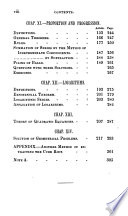 | James Bryce - 1846 - 352 pages
...extended to quadrinomials — See Euc. П., 4, and Exs. 57, 59, Art. 26. Again, from Ex. 5 we see that the product of the sum and difference of two quantities is equal to the difference of their squares ; and conversely, that the difference of the squares of two quantities is equal to the product of the... | |
 | Horatio Nelson Robinson - Algebra - 1846 - 276 pages
...2a— 3J. Ans. 4a3-— 9J3. Multiply 3y — c by 3y-\-c. Ans. Qy3 — c3. Thus, by inspection we find, the product of the sum and difference of two quantities is equal to the difference of their squares. The propositions included in this article are proved also in geometry. (Art. 14 ) We can sometimes... | |
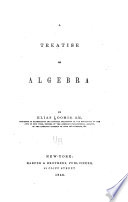 | Elias Loomis - Algebra - 1846 - 380 pages
...beginners often commit the mistake of putting the square of a — b equal to a2 — b2. THEOREM III. (62.) The product of the sum and difference of two quantities is equal to the difference of their squares. Thus if we multiply a + b By a — b a*+ab — abWe obtain the product a3 — b" EXAMPLES. ,1. (x +... | |
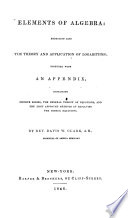 | Davis Wasgatt Clark - Algebra - 1846 - 374 pages
...or a+^b, are called binomial surds, and may be reduced to rational quantities on the principle that the product of the sum and difference of two quantities is equal to the difference of their squares. Thus the binomial surd Multiplied by - —Vab+b Gives a +5, a rational quantity. 312. Trinomial surds... | |
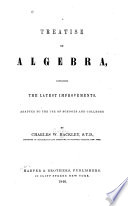 | Charles William Hackley - Algebra - 1846 - 544 pages
...proposed equation will become altogether indeterminate. The numerator, being the product it' the cum and difference of two quantities, is equal to the difference of their square?, !<> wit : I* — (4!-f-4ar)= — 4ac. We see. there!' ire, that 2# is a common factor to the... | |
 | Thomas Tate (mathematical master.) - 1847 - 138 pages
...THEOREMS. 34. The following theorems ought to be committed to memory. (a+b) x (ai) = aO-62. That is, the product of the sum and difference of two quantities is equal to the difference of their squares. Thus we have, (2x + 3a) x (2x-3a) = 4x* — 9a2. And so on to other cases. 35. When a quantity is multiplied... | |
| |